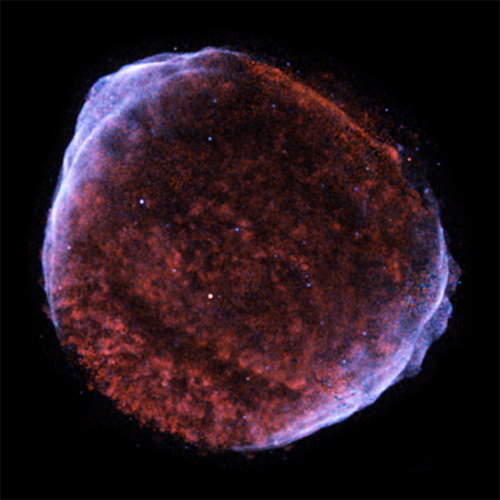SN 1006: A supernova remnant about 7,000 light years from Earth.
Caption: Chandra's image of SN 1006 shows X-rays from multimillion degree gas (red/green) and high-energy electrons (blue). In the year 1006 a "new star" appeared in the sky and in just a few days it became brighter than the planet Venus. We now know that the event heralded not the appearance of a new star, but the cataclysmic death of an old one. It was likely a white dwarf star that had been pulling matter off an orbiting companion star. When the white dwarf mass exceeded the stability limit (known as the Chandrasekhar limit), it exploded. Material ejected in the supernova produced tremendous shock waves that heated gas to millions of degrees and accelerated electrons to extremely high energies.
Scale: Image is 36 arcmin across.
Chandra X-ray Observatory ACIS Image
|


